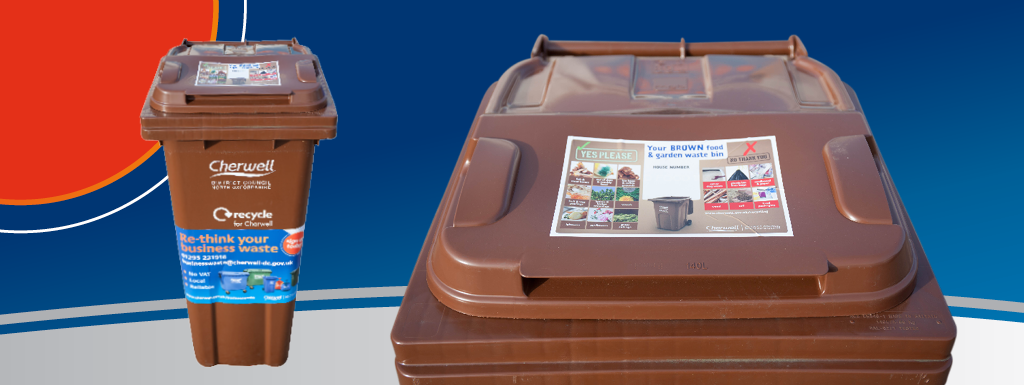
Food waste recycling
We provide food waste recycling services for businesses like restaurants, catering companies, shops and schools.
Collections are flexible and can be weekly or fortnightly.
Bin sizes and price per lift
| Bin size | Height | Width | Depth | Holds | Price per lift 01/04/2024 to 31/03/2025 |
Price per lift 01/04/2025 to 31/03/2026 |
|---|---|---|---|---|---|---|
| 140 Litre | 1054 mm | 560 mm | 560 mm | 2-3 sacks | £5.00 | £5.50 |
Order your food and waste recycling bins
Managing your food waste collections
Waste should be contained within your bin so the lid shuts flat. We are unable to empty bins that are overflowing or surrounded by excess waste.
We know, on occasion you may have excess waste that won't fit into the bin and we can collect this for you, provided it is presented correctly. If you have additional waste, please:
- Secure the waste in clear sacks and make sure the bags are tied.
- Place the sacks neatly to the side or behind your existing bin.
- Make sure the crews have clear access to empty the bin. This will then be refilled with your additional excess waste and recorded as an additional lift.
Please note that you will be charged for all additional lifts.
If you have any queries about excess waste please email businesswaste@cherwell-dc.gov.uk for advice.
What can go in your food waste recycling?
All of these materials can be included in your food waste recycling:
- Meat and bones
- Fruit and vegetables
- Dairy
- Eggs and eggshells
- Tea and coffee grounds
- Bread and pastries
- Fish
What don’t we accept?
We cannot accept food waste recycling containers that include:
- Black sacks
- Plastic bin bags or liners
- Plastic packaging
- Cooking oil
How we recycle your food waste
We use process called Anaerobic Digestion (AD).
This process uses microorganisms to break down the food waste. This process also uses an enclosed system, where there is an absence of oxygen to aid in breaking down the food waste. The result is methane coming off which is collected and converted into biogas. Biogas is used to generate electricity or heat. The AD process also creates a nutrient-rich material which is used as a fertilizer for land regeneration.

